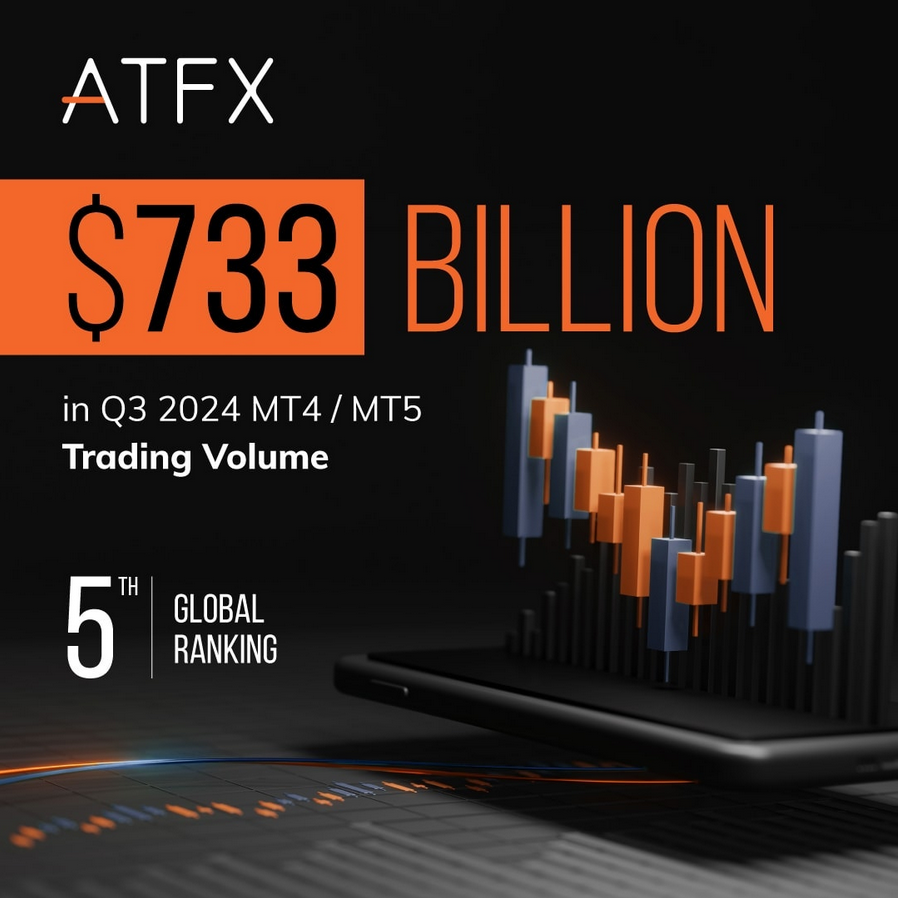The euro and pound continue to face downward pressure amid dollar strength driven by U.S. inflation concerns, with the euro nearing its lowest level in a year and the pound slipping past key support levels. In the eurozone, speculation grows around a possible ECB rate cut in December due to persistent inflation pressures, exacerbated by U.S. trade tensions. The yen weakens as “Trump trades” influence markets, reflecting expectations of tighter U.S. policy, which could hinder Japan’s economic recovery. Gold, meanwhile, has seen recent sell-offs but may find short-term support as investors seek stability amid U.S. rate uncertainty.
EUR/USD Analysis and Forecast
The Euro (EUR) continues to face downward pressure against the US Dollar (USD), influenced by both domestic and global factors. Currently, EUR/USD is trading around 1.0612, having recently breached the psychological 1.06 level for the first time since November 2023. Key factors such as anticipated inflation data from the US and the political uncertainty in Europe are keeping the Euro subdued.
- US Inflation Influence:
- Expectations of a rise in US headline CPI to 2.6% y/y from 2.4% reflect concerns about inflation’s persistence, potentially reducing the likelihood of a Federal Reserve rate cut at the December 18 meeting. Market expectations for a 25-bps rate cut have already dropped to 58% due to these inflationary pressures.
- Higher US inflation could lead to further dollar strength, intensifying pressure on the Euro and potentially pushing EUR/USD lower in the short term.
- ECB Rate Decision:
- The European Central Bank (ECB) faces internal debate over rate cuts, with some members calling for a large 50-bps cut in December. The ECB’s decision may also be influenced by recent developments in US politics, with Trump’s re-election potentially leading to tariffs on European goods, exacerbating inflationary concerns within the Eurozone and complicating the ECB’s efforts to reach its 2% target.
- Technical Analysis:
- Support Levels: Immediate support for EUR/USD lies at 1.0591, with a deeper support level around 1.0559. The 1.0591 support has held since November 2023 and is a critical area to watch.
- Resistance Levels: Resistance is encountered at 1.0627, with additional resistance at 1.0659. Breaching 1.0627 could open a short-term recovery pathway.
- MACD Indicator: The MACD has shown sustained movement below the zero line, suggesting continued downside potential. A reversal may require positive US data or a dovish tone from the Federal Reserve.
- Forecast:
- In the coming weeks, EUR/USD is likely to test the lower support levels near 1.0550 if US inflation and dollar strength persist. If the ECB introduces aggressive rate cuts, this could further push the Euro lower toward the 1.05 region. However, a weaker-than-expected US inflation reading or dovish Fed comments could enable a short-term recovery towards 1.0650-1.0700.
GBP/USD Analysis and Forecast
The British Pound (GBP) is also experiencing selling pressure, currently trading near 1.2709 after breaking below the key 1.27 support level. The currency pair’s decline has been largely influenced by US inflation data and concerns over the impact of US trade policies on the UK economy.
- US CPI Impact on GBP/USD:
- The recent uptick in US inflation to 2.6% has strengthened the USD, putting pressure on GBP/USD. Market expectations for a Fed rate cut have decreased as inflationary pressures remain a concern, which could contribute to continued GBP weakness in the near term.
- Political developments, including Trump’s proposed tariffs on European goods, could also indirectly affect the Pound through potential economic contagion within Europe.
- UK Economic Outlook:
- Recent UK labor market data has shown resilience, with a moderate increase in unemployment and a slight slowdown in wage growth. This aligns with the Bank of England’s cautious stance on rate cuts. However, as US economic data strengthens, the Pound may struggle to recover without a shift in domestic data or a softer stance from the Fed.
- Technical Analysis:
- Support Levels: Key support lies at 1.2685 and 1.2642, with 1.2685 serving as a pivotal level for potential bounce-back in the short term.
- Resistance Levels: Resistance is seen at 1.2781 and 1.2843. Breaching these levels could signal a short-term recovery, but resistance remains strong at 1.2900.
- MACD Indicator: The MACD divergence indicates limited selling momentum, suggesting that GBP/USD may stabilize or see minor recoveries before facing further downward pressure.
- Forecast:
- GBP/USD is likely to remain pressured, with a potential test of the 1.2640 support. If US economic data continues to outperform, a breakdown below 1.2640 could open a path to 1.2550. Conversely, weaker US data or a dovish shift from the Fed could allow for a short-term rebound towards 1.2800.
USD/JPY Analysis and Forecast
The Japanese Yen (JPY) has been weakening significantly against the USD, currently trading around 154.80 as it approaches resistance levels. A strong USD due to US inflation expectations, coupled with Japan’s inflationary pressures, is contributing to the current trend.
- US Inflation and Fed Policy Impact:
- US inflationary pressures are driving expectations of sustained interest rates, which in turn are keeping the USD strong. This environment favors USD/JPY strength as investors anticipate fewer Fed rate cuts in the short term.
- Japanese Economic Outlook:
- Domestic producer prices in Japan have risen, indicating persistent inflationary pressures. The Japanese yen’s weakness also stems from broader global risk sentiment, with investors favoring the dollar as a safe haven amid political uncertainty in the US and ongoing inflation fears.
- Technical Analysis:
- Support Levels: Key support exists at 154.29, 153.71, and 153.30. The 154.29 level is a critical level for any potential downside.
- Resistance Levels: Resistance is around 155.20, which, if broken, could lead to further gains toward 156.00.
- MACD Indicator: With the MACD indicating overbought conditions, USD/JPY may experience a short-term pullback.
- Forecast:
- USD/JPY is expected to continue its bullish trend, potentially reaching 155.50-156.00 if US inflation remains strong. If the price fails to break above 155.20, a minor correction to 154.30-153.70 is likely.
Gold (XAU/USD) Analysis and Forecast
Gold has been trading within a bearish trend, retreating from the $2,617 level, and is now approaching key support levels around $2,590. The metal is highly sensitive to US inflation data and interest rate expectations, which have been favoring the dollar.
- US Inflation and Interest Rates:
- Rising inflation and a stronger dollar create a challenging environment for Gold as higher interest rates reduce the metal’s appeal as a non-yielding asset.
- Political uncertainty in the US with Trump’s election could lead to further dollar strength if tariffs are imposed, pushing Gold lower due to inflation concerns.
- Technical Analysis:
- Support Levels: Gold has immediate support at $2,578 and $2,554. A decline below these levels could signal further downside potential.
- Resistance Levels: Resistance is seen at $2,617 and $2,650. Breaking above $2,620 could signal a potential uptrend.
- MACD Indicator: With Gold in the oversold territory, a technical rebound is possible if it consolidates around the $2,590 support.
- Forecast:
- Gold’s near-term outlook is bearish, with potential tests of support at $2,578 and $2,554. If US inflation eases, however, Gold could see a recovery toward $2,650. A breach of $2,620 could lead to a larger rally, but the metal’s recovery remains uncertain as the USD remains strong.
Summary of Key Levels and Forecasts
| Asset | Support Levels | Resistance Levels | Forecast Range |
|---|---|---|---|
| EUR/USD | 1.0591, 1.0559 | 1.0627, 1.0659 | Short-term bearish, potential to 1.0550 |
| GBP/USD | 1.2685, 1.2642 | 1.2781, 1.2843 | Bearish, could test 1.2640 with possible rebound |
| USD/JPY | 154.29, 153.71 | 155.20 | Bullish, resistance at 155.50-156.00 |
| Gold | $2,578, $2,554 | $2,617, $2,650 | Bearish trend, potential support test at $2,578 |
This analysis assumes continued dollar strength in the short term due to inflationary concerns. Any signs of weaker US inflation could provide a basis for corrections across the major pairs and Gold, but the overarching trend remains USD-favorable.









